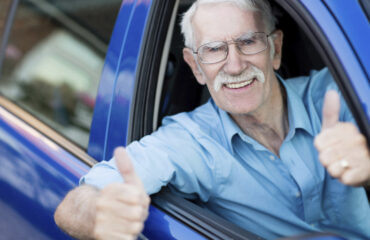High Tech Approaches to Prevent Alcohol-Impaired Driving
When was the last time you heard a hostess say, “Have one for the road”? Decades, right? However, in the 50’s and 60’s it was a host’s or hostess’s duty to make sure their guests had plenty to drink with little regard for the consequences.
Fast forward to the 21st Century. Awareness about alcohol-impaired driving is at an all-time high and the risky behaviors associated with alcohol and driving is at an all-time low. In the National Highway Traffic Safety Administration’s 2013-2014 roadside survey there was a decrease of the percent of alcohol positive drivers from 35.9% in 1973 to 8.3% in 13-14. The percentage of drivers testing at .08 BAC or higher dropped from 7.5% to 1.5% and overall there was an 80% reduction in alcohol impaired drivers on the road on weekend nights.
New Technological Tools
We are not only seeing actual behavioral changes in drivers but we have many more tools available to prevent alcohol-impaired driving. An individual may have a court-ordered device like an ignition interlock which prevents the car from starting if the person has been drinking. Or a person who is ordered to abstain from all alcohol may be required to wear a continuous alcohol monitoring device around the ankle. Individuals on probation for alcohol-related offenses may receive Etg or Ets lab test which measure these metabolites or biomarkers of ethanol to see if the person has been drinking.
It is predicted that in 5 years all cars will have sensors that prevent the car from starting if the driver is over the “legal limit.” According to an article from the UK, there are two devices on the horizon. “One is a sensor, located either in the steering wheel or driver-side door, that can “smell” your breath; essentially a breathalyser. The other system is a touch sensor, either on the ignition button or gear shift, that can scan your blood-alcohol content (BAC).”
Responsible Young Drivers?
Another approach comes out of Belgium where the drinking age for wine and beer is 16 and “hard liquor” is 18. A recent celebration in a teen venue that holds thousands of party goers, a group called Responsible Young Drivers set up an “alcohol barrier” that required the driver to blow into a breathalyzer before being able to exit the parking lot. Because the party goers knew ahead of time that such a barrier would be in place, 90% of drivers were able to exit on their first try.
Might this be a good solution for the U.S. for venues where a lot of drinking goes on and prevent alcohol-impaired driving? What do you think?
Get more articles like this
in your inbox
Subscribe to our mailing list and get the latest information and updates to your email inbox.
Thank you for subscribing.
Something went wrong.








